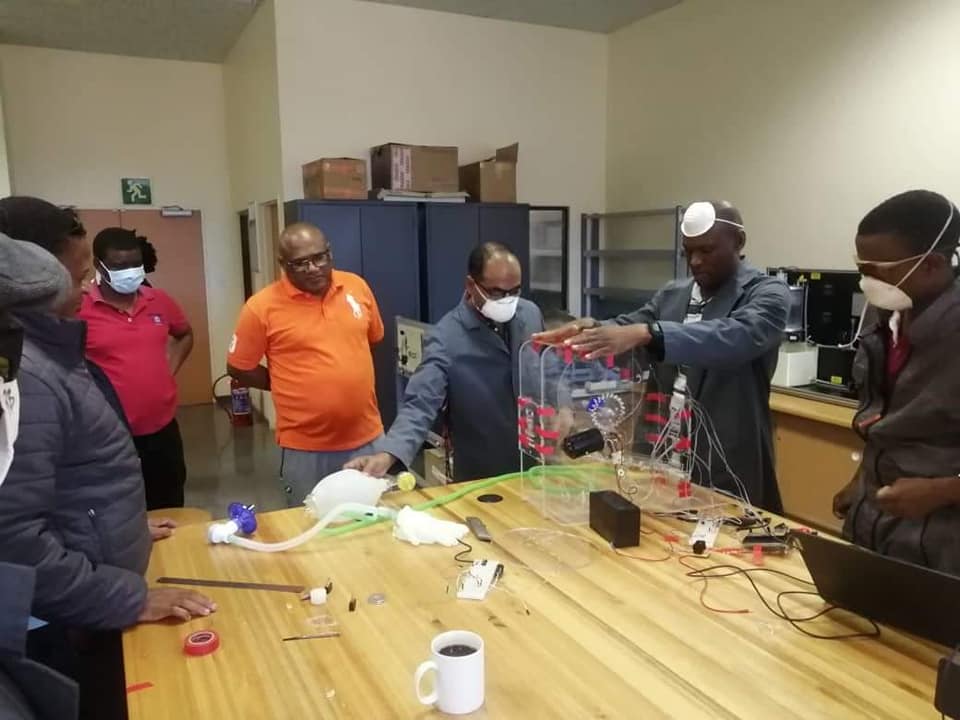A University of Botswana team of engineers and product designers which has been working closely with medical experts on a number of projects as part of the university’s COVID-19 response, is on the verge of breaking through with production of a ventilator. The team is currently hard at work completing its prototyping.
Following the World Health Organisation declaring COVID-19 a global pandemic, the University of Botswana immediately assembled a team of engineers and product designers to specifically come up with solutions that supported the national response to the pandemic.
So far the team has designed and developed a face shield for COVID-19 frontline health workers and the general public. The shield is already in production while the hood and mask will soon go for production as well.
Consequently, once complete and in production, the ventilator, hood and mask will bring to four, besides production of sanitizers, the number of projects which the University of Botswana has completed in the wake of the COVID-19 pandemic.
The device (ventilator) will be used to induce breathing in patients having severe respiratory failure (not breathing on their own).

A mixture of oxygen and medical air at the correct proportions, will be supplied from either the hospital lines or directly from the cylinders and administered to the patient thorough the ambu-bag on the device.
For the process to be undertaken correctly, the device has the following controls:
• Respiration Rate (RR) Knob (inhaling and exhaling per minute is controlled and monitored)
• Tidal Volume (TV) Knob (during inhaling, the volume of the mixture is controlled and monitored)
• Inspiration : Expiration (I:E) ratio Knob (ratio of inhaling to exhaling is controlled and monitored in time space)
• Inspiration Pressure (IP) Knob (pressure of the mixture to be inhaled is controlled and monitored)
The above parameters appear on the digital screen of the device and with the use of the pulse oximeter (a separate instrument), to detect the oxygen concentration in the patient’s blood, a trained medical staff can adjust these parameters accordingly to suit the patient.
SOURCE : UNIVERSITY OF BOTSWANA




